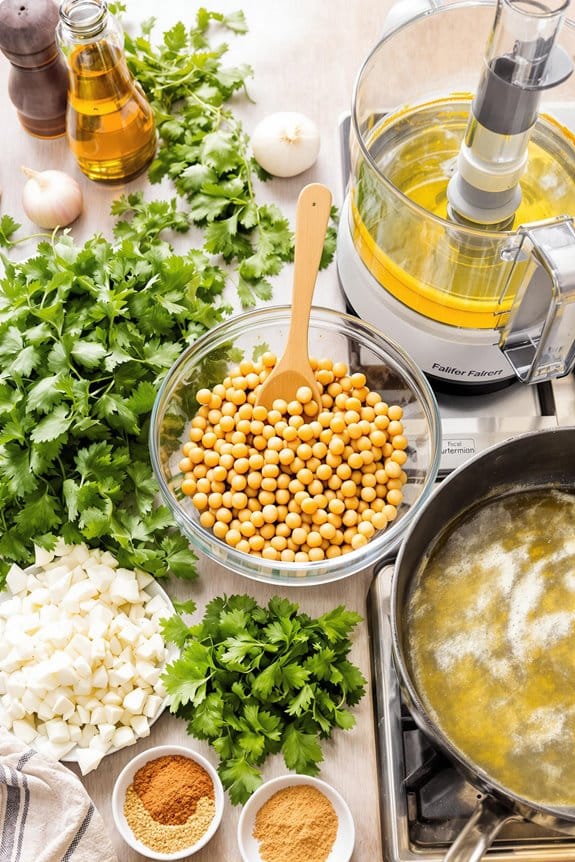In the quiet solitude of your kitchen, the raucous bubbling of a savory broth comes to life, marking the beginning of your homemade ramen night. You’re not merely preparing a meal, you’re orchestrating an experience that’s as rich in tradition as it is in flavor. With each element of the dish, from the tender noodles to the succulent proteins, you’re crafting an edible masterpiece that’s uniquely yours. But why stop there? What if you could elevate this experience, turning a simple dinner into something unforgettable? Stick around, the best part is just about to unfold.
History
Despite its global popularity today, ramen’s origins trace back to China, before it made its way over to Japan. It was Chinese immigrants in the late 19th century who introduced Japan to this delightful dish. Initially, ramen was a simple meal for laborers, but it quickly gained popularity among all classes.
In the 1950s, Momofuku Ando invented instant ramen, providing a quick, affordable meal solution for post-war Japan. This innovation catapulted ramen’s fame beyond Japan’s borders. Today, you’ll find ramen shops worldwide, each offering their unique twist on this classic noodle dish.
But ramen isn’t just about the noodles. The broth, whether it’s soy-based shoyu, miso, or the rich, creamy tonkotsu, plays an essential role in defining the dish’s character. Toppings like slices of pork, green onions, and a soft-boiled egg add texture and flavor.
Ramen has evolved, just like the culture it sprouted from. From humble beginnings to global sensation, ramen’s journey is as rich and varied as the dish itself. So, next time you’re savoring a bowl, remember the history you’re slurping up!
Recipe Cooking Steps
Settle into the cozy comfort of a homemade ramen night with this delicious, straightforward recipe. This dish, steeped in the authentic flavors of Japanese cuisine, is perfect for a quiet evening in and promises a warm, hearty bowl of ramen that’s as satisfying as it is tasty. With just a handful of ingredients and a few simple steps, you’ll soon be savoring your very own homemade ramen.
This recipe zeroes in on the essentials: quality noodles, a flavorful broth, hearty protein, and fresh vegetables. The key to a great bowl of ramen is in the broth – a rich pork broth can elevate your dish to new heights. While instant ramen is a convenient shortcut, nothing beats the taste of fresh ramen noodles. Add in some succulent slices of pork belly and vibrant green onions for a flavor and color burst. A soft-boiled egg crowns the dish, adding a creamy, rich element to your bowl.
Ingredients:
- 2 packets of fresh ramen noodles
- 4 cups of pork broth
- 2 slices of pork belly
- 2 green onions, sliced
- 2 eggs
Start by cooking the ramen noodles according to the packet instructions. As the noodles cook, heat the pork broth in a separate pot until it begins to boil. At the same time, pan-fry the pork belly slices in a hot pan until they’re crispy. Once the noodles are cooked, drain them and divide them between two bowls. Pour the hot pork broth over the noodles and add the cooked pork belly slices. Top each bowl with the sliced green onions and a soft-boiled egg, which can be prepared by boiling an egg for exactly 6 minutes and 30 seconds.
A few additional tips to keep in mind: initially, remember not to overcook your noodles. They should be slightly chewy as they’ll continue to soften in the hot broth. next, the pork belly can be substituted with any other protein like chicken, tofu, or even shrimp. finally, for an even more flavorful broth, consider simmering it with a piece of ginger or a clove of garlic. Enjoy your homemade ramen night and happy slurping!
Step 1. Boil Ramen Noodles

Diving right into the process, your first task is to boil the ramen noodles. But don’t just toss them into a pot of boiling water. There’s an art to it. Start by filling a large pot with water. The amount of water isn’t that important as long as there’s enough to submerge the noodles completely.
Once the water’s boiling, add in your noodles. If you’re using fresh ramen noodles, they’ll take about 2-3 minutes to cook. If they’re dried, you’re looking at 4-5 minutes. Keep a watchful eye on them. You’re aiming for a firm, chewy texture. Overcooked noodles are a rookie mistake that you don’t want to make.
When the noodles are done, drain them immediately to stop the cooking process. Run cold water over them if needed. This is known as ‘shocking’ the noodles and it helps maintain their firm texture. Now, give them a good shake to get rid of any excess water. You don’t want watery ramen, do you?
There you have it, perfectly boiled ramen noodles ready for the next step. Enjoy the process, because the best is yet to come!
Step 2. Heating the Pork Broth

While your ramen noodles are happily boiling away, you’ll want to get started on heating up the pork broth. Grab a separate pot, pour in the pork broth and crank up the heat. It’s important to keep an eye on the pot because you’re aiming for a gentle simmer, not a rolling boil.
As the broth heats, a layer of fat may start to float on the surface. Don’t be tempted to skim this off – it’s packed full of flavor and gives your broth that lip-smacking quality that’s so characteristic of a good ramen. If you’re using a pre-made pork broth, it’s time to taste. If it needs a little extra something, don’t be shy about adding a splash of soy sauce or a pinch of salt.
Once the broth is simmering, reduce the heat to low and let it continue to warm while you prepare the other ingredients. The goal is to keep it hot but not boiling until you’re ready to assemble your bowls. And remember, a good ramen broth should be rich, savory, and full of depth, so take your time to get it just right.
Step 3. Frying the Pork Belly

Next up is the star of the show – the pork belly. This succulent piece of meat will add a punch of flavor to your ramen, making it both filling and satisfying. Here’s how you’ll transform this raw ingredient into crispy, mouth-watering slices that’ll have everyone begging for seconds.
- First, grab your pork belly and pat it dry with a paper towel. This will guarantee a good sear and a crispy exterior.
- Heat up a pan over medium-high heat. Once hot, add a splash of oil and place your pork belly in the pan. Now, let it sizzle. You shouldn’t move it around too much; just let it do its thing.
- After about 4-5 minutes, flip the pork belly over. It should have a beautiful, golden-brown crust. Cook it for another 4-5 minutes on the other side.
And there you have it – perfectly fried pork belly! This simple yet flavorful component is sure to elevate your ramen experience. Just remember, the key to a great pork belly lies in the sear, so don’t rush this step. Your patience will be rewarded.
Step 4. Dividing Noodles Into Bowls

Once your noodles are perfectly cooked, it’s time to assemble your ramen bowls. Grab your bowls and get ready to create a masterpiece. It’s important to divide the noodles evenly to guarantee that each bowl is equally satisfying. A pair of tongs or chopsticks can be your best friend during this step, allowing you to control the portion of noodles going into each bowl.
Now, pay attention to arrangement. The way you layer your noodles can impact the overall eating experience. Place the noodles gently into the bowls, letting them spread out naturally. Don’t just dump them in – you’re building the foundation of your bowl, so take your time.
Remember, ramen is not just about taste, but also about presentation. A well-arranged bowl of ramen is a feast for the eyes as well as the palate. So, spread those noodles out, let them shine, and prepare for the next step.
Mastering the art of dividing noodles might seem trivial, but it’s an integral part of ramen making. So, take a moment, breathe, and appreciate this simple yet vital step towards your homemade ramen night.
Step 5. Adding Broth and Toppings

With the foundation of your ramen bowls laid, it’s time to bring them to life with the addition of your flavorful broth and delicious toppings. Your kitchen will soon be filled with the comforting aroma of simmering broth, tantalizing your taste buds.
- Start by pouring the hot pork broth over your divided noodles. The broth should be steaming and aromatic, its rich flavors seeping into the noodles and transforming them from simple to sublime.
- Next, add your cooked pork belly slices. They should be crispy on the outside and juicy on the inside, adding a delightful texture to your bowl.
- Finally, garnish with sliced green onions and a soft-boiled egg. These toppings not only add color and flavor but also elevate your ramen to a whole new level.
New Recipe
- Pepperoni and Hot Honey PizzaTry the tantalizing twist of pepperoni pizza with hot honey, where sweet meets heat—how will it transform your taste buds?
Final Thoughts
Diving into the world of homemade ramen can be a delightful culinary adventure. You’ve tackled the basics, from the noodle selection to the savory broth, even the addition of protein and veggies. Now, you’re basking in the glow of a successful ramen night.
Reflect on the process. Did you enjoy the journey? Did the flavors match your expectations? Remember, perfection isn’t the goal here, it’s about exploration and enjoyment. Each attempt brings you closer to your ideal bowl of ramen.
Don’t be afraid to experiment. Swap the pork for chicken or tofu. Try different types of noodles. The beauty of homemade ramen lies in its versatility. You can adapt it to your palate, dietary needs, and cravings.
And finally, do share your experience. Ramen isn’t just a dish, it’s a celebration of culture, flavor, and shared moments. Invite friends over for your next ramen night or share your recipe online. The ramen community is welcoming and enthusiastic to learn from each other.








